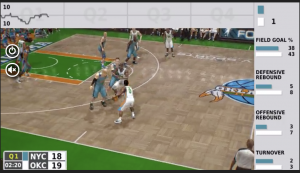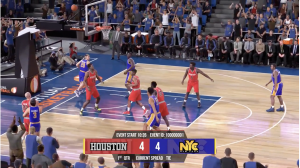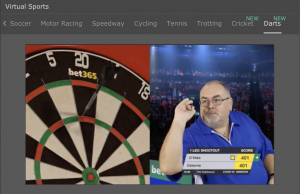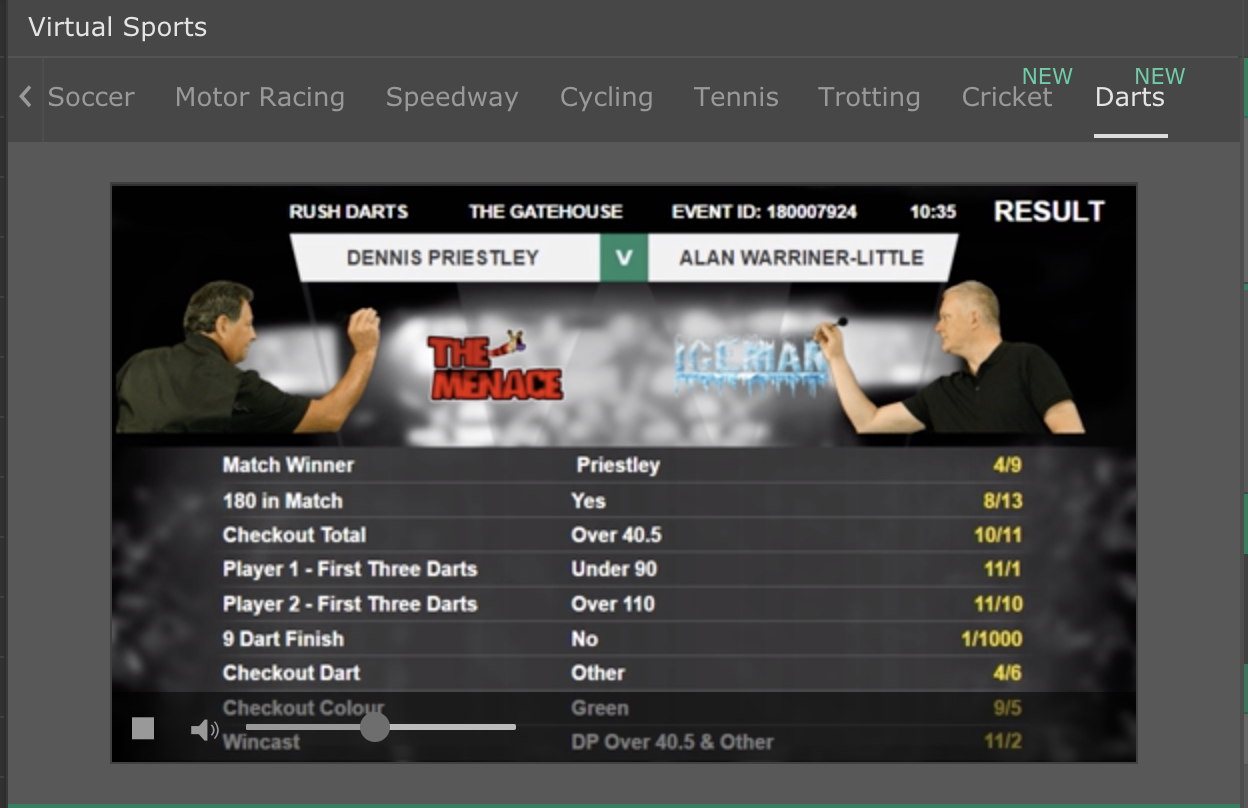One of the most obvious aspects of Virtual Sports is that there is a simulation  element to the event. A typical Virtual Sports event starts with a period of betting (which usually lasts for the majority of the allotted time for most Virtual Sports) and then this is followed by the simulation aspect.
element to the event. A typical Virtual Sports event starts with a period of betting (which usually lasts for the majority of the allotted time for most Virtual Sports) and then this is followed by the simulation aspect.
In many Virtual Sports, this simulation aspect takes on the form of a graphical representation of the game or match. That is, it is computer generated graphics and animations which display the event (in varying levels of realism) on the screen. In some of the newer Virtual Sports titles however, there has been a move away from these CGI enhanced games to including real video as part of the simulation.
In this article, we are going to take a look at how important Video could well become in Virtual Sports gaming and why a seemingly older technology, can be used by a more modern technology to enhance it immeasurably for the end user.
The Benefits of Video in Virtual Sports
So how can what appears to be a backward step using older technology, actually  prove to be an enhancement for new technology such as Virtual Sports?
prove to be an enhancement for new technology such as Virtual Sports?
The answer lies in two different forms. Firstly, there is the issue with using computer generated graphics and animations for Virtual Sports games. The first thing is that even while these graphics have improved immeasurably over the years, they are still not perfect. In some Virtual Sports (Virtual Cycling is a great example) the graphics are almost indistinguishable from the real life game and they work very well, but in other games, such as Virtual Soccer for example, it is easy to tell that these are computer generated and the realism levels are considerably lower.
This does leave you with a somewhat mix of realism when you play Virtual Sports, where you can tell some games are entirely computer generated, and others look very realistic. That isn’t ideal when the overall aim of Virtual Sports is to try and give a player as realistic a portrayal of a sport and the associated betting markets on that sport, as possible.
So, what is the way that providers can improve the level of realism in Virtual Sports? Well the answer to that is to use video footage of real people playing real games and to use this footage as the basis for Virtual Sports production.
Video resolves the issue of realism in Virtual Sports as, of course, using real video to portray the result of a Virtual Sports event, as is used in items such as Virtual Darts or Virtual Basketball on sites like bet365 Sport, makes the event look as if it is being shown live on the television.
The quality of the motion captured is very good and of course, the way that the animations are edited and then used in certain situations (such as a player celebrating when they score, or being frustrated when they do not) all help add a level of realism to the Virtual Sport you are playing.
However, there is even a difference in how Virtual Basketball and Virtual Darts approach their use of video within the game. In Virtual Basketball for example, bet365 used pretend players and teams to play through a number of plays in a specially mocked up court, which they then digitally enhanced to make it look more like a regular professional basketball game.
With Virtual Darts, the company used real life players from the darts senior tour to model the throws on and of course, securing an agreement with the seniors tour means that these real life players, some of whom were former World Champions in their time, makes the game feel a lot more realistic as these are instantly recognisable darts players, while the basketball players are less so.
However, there are moves afoot to address this issue.
Stock Footage from Previous Games
One company is currently producing a game called NBA Last 90, in conjunction  with the NBA, the main professional basketball association in the United States. What will be different about this game is that not only will it include real life teams and players from the NBA, rather than simply made up teams based on those teams, but it will also use video from previous games between teams as the basis for its Virtual Sports presentation.
with the NBA, the main professional basketball association in the United States. What will be different about this game is that not only will it include real life teams and players from the NBA, rather than simply made up teams based on those teams, but it will also use video from previous games between teams as the basis for its Virtual Sports presentation.
Thousands of hours of video from hundreds of matches will be viewed and highlights from these will be adapted to be used in the new NBA Last 90 game. These highlights will be stored and then selected at random, just as highlights are selected in standard Virtual Sports offerings, to decide what will happen over the last 90 seconds of a Basketball game between two real NBA teams.
Of course, by introducing the random element, you prevent any game having the same score and outcome as what happened in real life and so you avoid players being able to second-guess what will happen in a match between two teams as each game will have many different potential outcomes based on the animations and options available.
By doing this, what you will end up with is a Virtual Basketball game that offers all the realism of a real-life NBA Game and by setting it in the final 90 seconds of the match, you also introduce a real-time element into the game, that is missing when you focus on presenting highlight packages of the whole game.
I can see this approach being adopted by many different Virtual Sports, especially those, such as Virtual Soccer, which have problems when it comes to the realism of the presentation of the game. By using stock footage, you could have many different potential outcomes for a game between two real life teams and with plenty of footage available of many sports, the potential is there for this video footage to become available across many different Virtual Sports.
